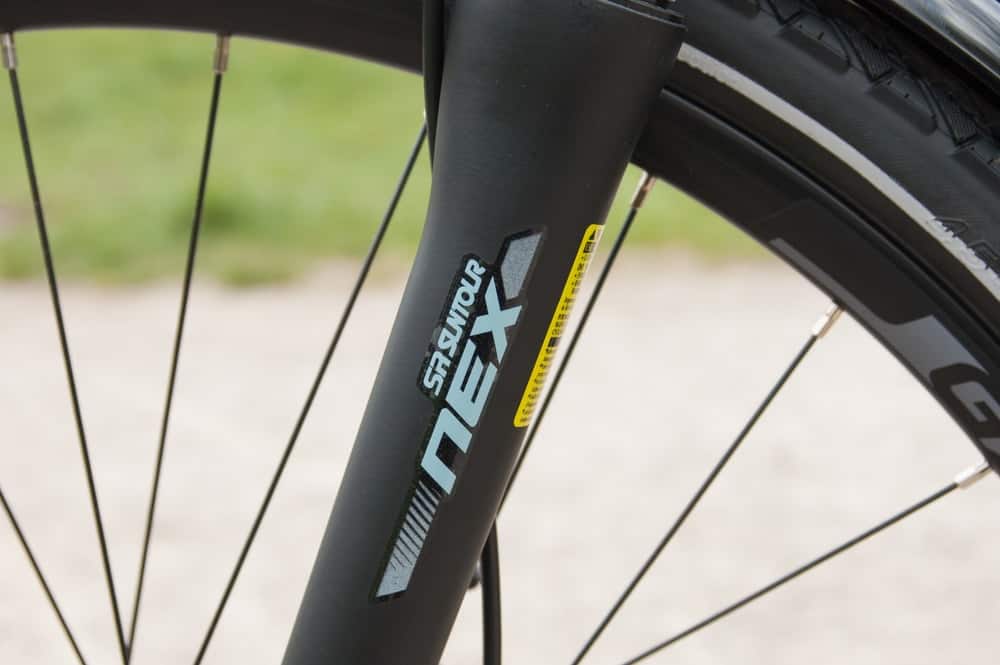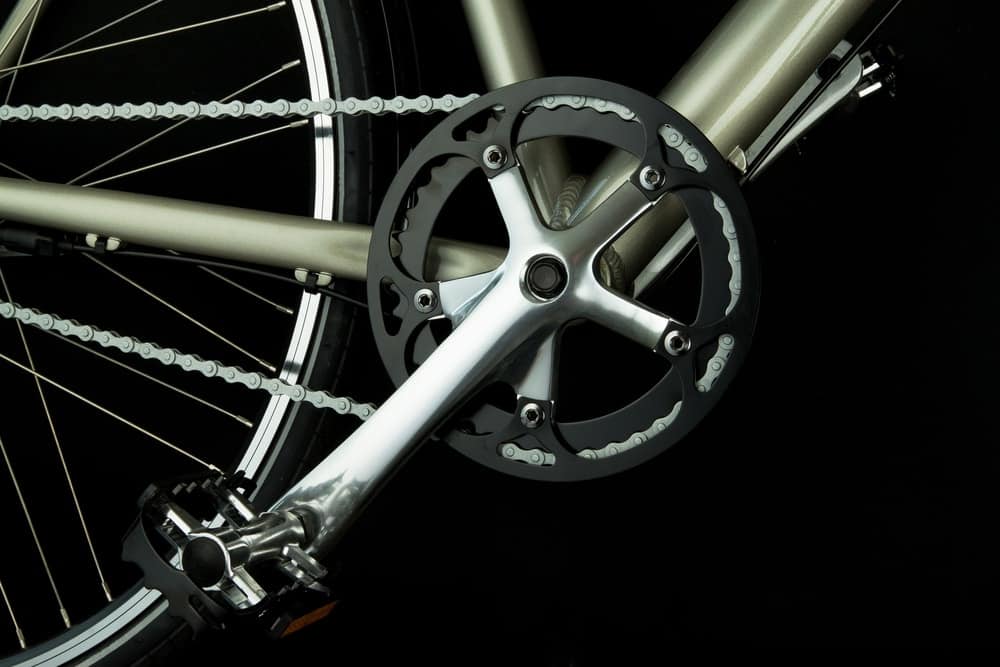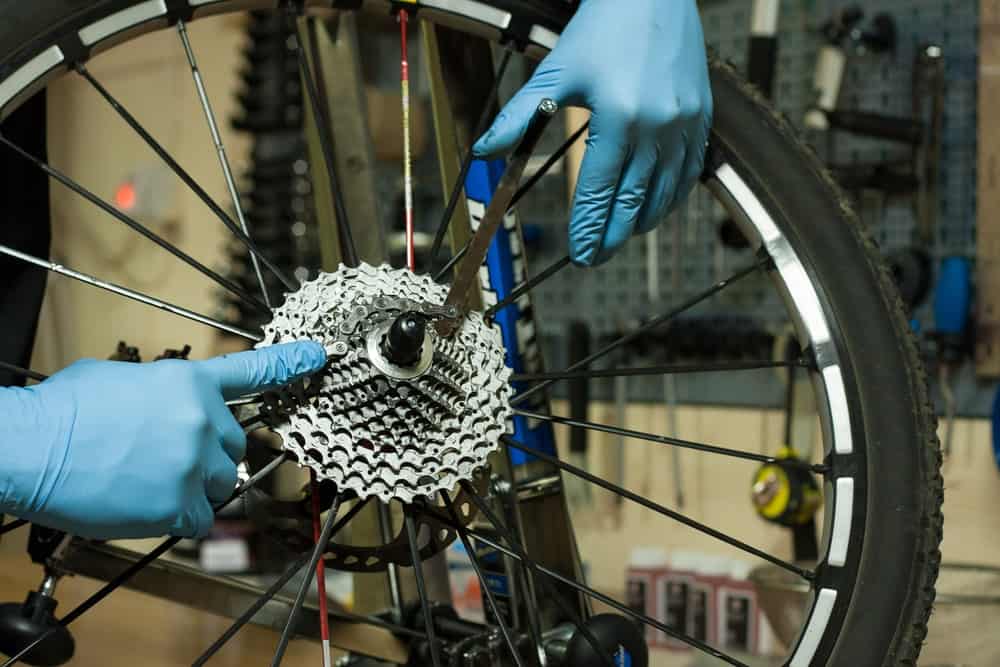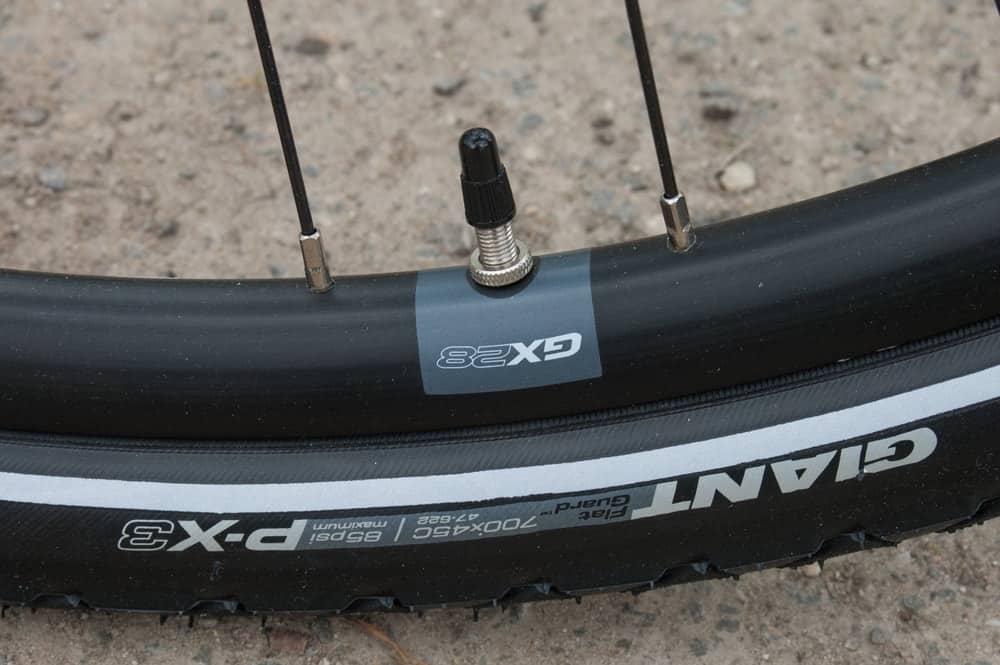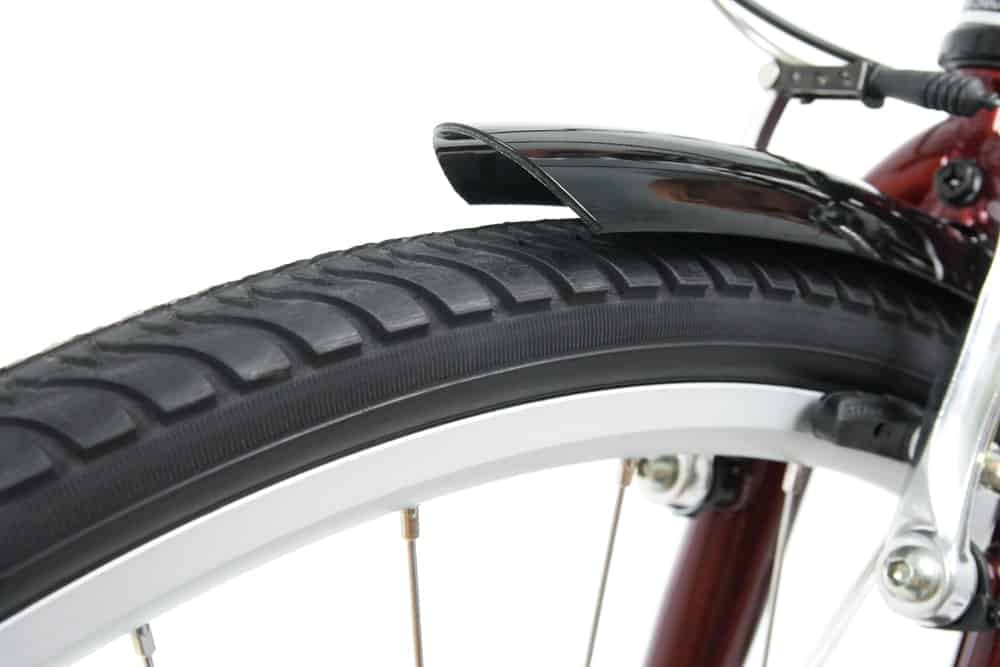Becoming a cyclist involves more than just physical conditioning and learning how to handle a bike on the road or the trail; you’ll need to get to know the anatomy of your bicycle itself.
Understanding the specific components of your bike will give you a better understanding of how it works and how to leverage its functions to achieve the performance or recreational experience you desire.
And if you’re planning to do some serious cycling, it’s likely that on occasion you will need to perform some moderate, routine maintenance on your bike to keep it in good working condition and ensure greater longevity for your bike.
To help you gain a better understanding of the components that make up your bike and how they work, we’ve compiled this ultimate guide to your bicycle’s anatomy.
From seat to pedals, from head to toe, this guide will provide a thorough overview of all your bike’s moving – and stationary – parts.
Saddle
Known colloquially as your bicycle’s seat, the saddle is one of the most important components of any bike, so it’s where we’ll start our exploration of your bike’s anatomy.
When riding a bike, you have five different points of contact – the seat, the pedals, and the handlebars. Each of these points of contact allows you to place and distribute your weight across the bike, helping to alleviate and balance the pressure you experience as you ride.
With each passing bump, your bum can experience quite the jarring ride.
As a result, a comfortable saddle is key.
But saddles offer more than just comfort; they can affect performance.
If you’re racing a road bike or attempting to ride long distances at a fast pace, then you’re likely to prefer a thinner, more performance-based bike saddle.
If you’re more of a recreational rider, then a wider, more padded seat will do fine.
Padding helps to prevent pressure from building up on your pelvic bones, which could leave you in discomfort both during and after your ride. This is particularly beneficial if you’re on a hybrid bicycle or a mountain bike, where you will be riding in a more upright position.
But for endurance road cyclists, thinner saddles may work fine, as the body is positioned more downward and forward, better distributing the weight over the handlebars and pedals, rather than so much on the seat.
Saddles can also be designed differently for men and women, as pelvic pressure points can differ for each.
Cushioning options can vary – from gel to foam to none at all. It’s important to take
Frame
Shiny and pretty, bicycle frames come in all sorts of designs. But more than just making your bike nice to look at, the frame serves a critical role in the bike’s anatomy.
The bicycle frame is the main structure and support of your bike.
Frame design and structure varies, depending on whether you’re on a road bike, a mountain bike, a hybrid, or even an electric bicycle.
Bicycle frames come in a range of size options, and it’s important to receive a professional fitting to determine the most appropriate frame size for your body. This will help to ensure a comfortable ride.
Frames can even come in different designs for males and females. For example, a men’s road bike will have a straight top bar stretching from the saddle to the stem, while a women’s design may have a bar that bends diagonally from the stem to the center of the bike.
One of the main differentiators with bike frames is the materials used. Bikes can be made of steel, aluminum, titanium, and carbon.
The choice of material will depend on your performance and durability expectations.
A serious road cyclist will likely opt for an all-carbon frame due to its lightweight benefits. Carbon frames, however, are soft and easily damaged. With a hefty price tag, they’re no small investment, either, but for the performance-based cyclist, their performance benefits outweigh their cost.
Other recreational cyclists will find an aluminum frame proves sufficient. Although I consider myself an avid cyclist, I don’t race and my ride times matter only to me.
As a result, I’ve opted to use an aluminum frame for years. It’s lightweight enough that I’m not dragging my bike up the hills, but it’s also durable and has withstood the test of several crashes with hardly a scratch.
The titanium also offers a lightweight and durable option, but it’s going to be more expensive than most recreational cyclists have an interest in paying.
You may still find bicycles made using steel, as well. It is durable and affordable, but also heavy and, as a result, is not usually desirable for most riders.
Brake Levers
Located to the front of your handlebars, the brake levers are one of the most critical bike components to familiarize yourself with.
No matter what type of brake or lever your bike uses, it’s important to understand proper usage of the levers in order to be able to safely control and stop your bike.
Gently applying pressure to one of the brake levers – the right side on a road bike – will apply your rear brake pads to your wheel, slowing your bike down.
In situations when you require more sudden braking, you may need to pull both brake levers at the same time.
You’ll want to know which lever controls which brake, as putting too much pressure on the front brake only can cause you to lose control of your bike, placing you at risk of crashing.
Brake levers come in several different designs, depending on the type of bike you have and the type of brake design the bike employs.
Road bikes tend to use cantilever or caliper brakes, and as a result, use a standard pull lever.
Mountain bikes use cable disc or v-brakes and use long pull levers.
A BMX bike may have a dual-pull lever.
These classifications have less to do with the length of the lever itself, but more to do with their ability to pull the brake cable when the brake lever is used to apply the brake.
The designation indicates both how hard and far the brake cable is pulled.
If you’re designing and building your own bike, it’s important to understand how these levers work and which will be best suited for your bike. But if you’re purchasing a commercial bicycle, then it will come with the appropriate brake lever and design already built-in.
Grip
The bicycle grip focuses on the design of the handlebars to provide you with a comfortable and controlled experience on your bike.
For bikes like mountain and hybrid designs, your handlebars will likely come with a grip attached.
These grips essentially have little tread designs, similar to what you might find on a tire or a shoe, which helps to give your sweaty, slippery hand greater control as you ride.
It’s even possible to purchase a separate grip and have it attached to the handlebar, should you find a grip design that is more suited to your comfort and your needs.
These grips can also prove helpful not only in giving you control but also in helping to reduce pressure on your hand and wrist as you ride.
As a result, it’s important to find a grip that works best for your unique body and riding style.
Road bikes use handlebar tape as their grip.
This tape can be purchased separately and wrapped around the handlebars. The tape can vary in color, absorbency, and padding.
My personal preference is to use a handlebar tape that actually contains some padding. Although I ride with padded cycling gloves, as well, I find the added padding helps to prevent wrist pain that often accompanies a long ride.
Stem
A smaller component connecting your bicycle’s handlebars to its frame and fork, I like to think of the stem as serving a neck-like function for your bike’s anatomy.
Stems are important for providing both support and control to your bike. They help you to be able to guide and direct your bicycle, but they also help to reduce some of the pressure and vibration transferred from the tires and frame into the handlebars.
On most bikes today, you’ll find one of two stem designs: Quill or threadless. A quill stem is used on recreational style bikes, while performance bikes, such as road bikes, utilize a threadless stem design.
Stems can vary in size, and they can also be adjusted, depending on your sizing specifications and comfort preferences.
Those riding recreationally on a hybrid bicycle may prefer a longer stem that allows them to sit slightly upright, while road cyclists will prefer their stem to sit as deeply into the headset as possible to give them a lower, more aerodynamic position, optimized for speed and endurance.
Gear Shifter
Another small, but critical, piece of your bike’s anatomy is the gear shifter. This lever or mechanism allows you to shift your bike’s gears, heavier or lighter, higher or lower, while you’re on your ride.
Gear shifter design on bicycles varies, depending on the style of bike you ride and the age of the bicycle.
When I first started riding a road bicycle design as a child, the gear shifters were located on the bike’s stem. I found this design quite cumbersome, as I faced difficulty maintaining control of the bike while I removed my hand from the handlebar to shift, and I also had trouble getting the bike to click into gear.
And while this design can certainly still be found if you have an older bicycle, newer bicycles use a different, and in my opinion, more efficient design.
On a road bike, you will find a gear shift lever located just behind your brake lever. This allows you to ride with your hands in the drops of your handlebars (the lower section of the “ram’s head” design), grip your brake lever, and shift gears by slightly tapping or clicking the gear shift with your finger.
The left side controls your front derailleur, while the right side controls your rear derailleur.
I find this design allows me to more efficiently shift my bike into the desired gear, while also maintaining good control.
While this design is popular on road bikes, other styles incorporate different gear shifter designs.
Mountain bikes tend to use thumb shifters, or “trigger” shifters, allowing you to keep your hands securely on the handlebars, while shifting with your thumb using a gear shift located near your brake lever.
These shifters can be located on the top, although newer designs have placed it beneath the bar.
Hybrid bicycles may use what is known as a twist grip gear shift design. This is located on your handlebars near your grip and allows you to grab the gear shift knob or ring and use a twisting motion to shift it up or down.
Some mountain bikes may also use a twist design.
Regardless of which gear shift design your bike incorporates, it’s important to gain a thorough understanding of how to properly shift gears in order to ride your bike safely and efficiently.
Handlebar
Similar to your bike’s saddle, the handlebar is a point of contact on your bicycle that helps to transfer pressure from your body to your bike.
Handlebars have two ends, one for each hand, which helps to better distribute your weight, reducing pressure and offering greater control of the bicycle.
Handlebar design varies, depending on the style of bike you ride.
Road bikes use a curved design which resembles an upside down, backwards “C,” and may sometimes be referred to as a “ram’s head” design.
This design allows riders to lower themselves closer to the bike and achieve a more aerodynamic position. It is designed for endurance and speed.
Mountain and hybrid bikes use a handlebar design where the bars go outward to the side of the bike. This allows the rider to sit in a more upright position as compared to a road bike.
Headset
If you’re wondering what gives your bicycle the ability to turn from side to side, it’s the headset. This small component is critical to your bike’s performance. Without it, you’ll go nowhere.
Headsets require a special design, which will allow them the flexibility to rotate, but that will also keep them stiff enough to help absorb road shock, as well as general wear and tear caused by the abuse of the road and the trail.
The headset design uses two small cups that have bearings inside, which set on either end of the head tube (discussed below). This helps to give your bicycle the function to rotate.
Headset design can be either threaded or threadless, each of which offers its own variations.
Head Tube
The head tube sits below your headset, connecting your headset to your bike’s fork, which we’ll explore more in a section below. Like the headset, the head tube is critical to your bike’s steering function.
Brake (front and rear)
You wouldn’t jump into a car if you knew its brakes would fail, and the same is true for a bicycle. Brakes are a critical component of any bicycle.
Whether you’re looking to slow down or come to a complete stop, it’s important to make sure your bike’s brakes are in good working order.
Just as with an automobile, your bike’s brakes are part of a complete system involving brake pads, cables, and a braking mechanism – in the case of bicycles, it’s usually drums or calipers.
You will find a braking system located in both the front and rear of your bicycle, activated when you apply pressure to the brake lever.
Three primary types of braking systems exist:
- Rim Brakes – Most common on road bikes
- Disc Brakes – Most common on mountain bikes
- Drum Brakes – Commonly used on tandem bicycles or bicycle used for hauling cargo
Brake pads are an important component of the brake system. Just as in your car, these pads can wear down over time, becoming less efficient and reliable. As a result, it’s important to inspect and replace them as needed.
The brake system on your bike is one area where you do not want to compromise on quality or maintenance, as your safety depends on it.
Fork
Aptly named, this bicycle component loosely resembles a pitchfork, but its function differs significantly from its namesake.
The fork of a bicycle extends from the head tube and flanks either side of the bicycle’s front wheel, allowing the wheel to be attached to the frame.
Attached to the front wheel, the fork helps you to steer your bike and gives you greater control.
There are two types of forks: threaded and threadless.
While forks serve the function of attaching the wheel and aiding in steering, they can also help to absorb some of the road or trail shock experienced during your ride.
On mountain bikes in particular, the fork contains shock absorbers.
Forks can be made of various materials, including aluminum and carbon. I use a carbon fork on my road bike. This helps to reduce the weight of my bike slightly without costing me as much as a full carbon frame.
If you’re looking for a way to lighten your bike or gain a slight edge when it comes to performance, it is possible to replace your fork with an upgrade, rather than buying a brand new bicycle.
Wheel
The wheel, it’s what makes your bike go ‘round. But your bike’s two wheels might be a little more complex than you think. There are actually several components that make up a wheel – the tire, rim, spokes, and hub – that help keep you riding, day after day.
Typically, your bicycle’s wheels will come in what is called a wheelset, meaning two paired wheels that are designed specifically to fit the dimensions of your bike.
The center of the wheel is known as the hub, and it includes axles, bearings, and a shell.
The structure of your wheel is provided by the rim, which is the round, hoop-shaped object that supports the tire. Rims are typically made using aluminum alloy.
The spokes connect the rim to the hub. Spokes are thin, and a wheel can have anywhere between 28 – 36 spokes.
Finally, a wheel uses a rubber tire, which is inflated using a tube. This is what your bike rests and rides on.
Wheel and tire design vary, depending on the type of bike you use and the purpose for which you plan to use it.
Performance tires for road bikes are thin and optimized for aerodynamics. Their tires may be completely smooth, with no treads at all.
Mountain bike tires are thick and wide, with various tread styles. These tires are designed to withstand significant impact from rocks and roots, while also giving you sufficient traction when riding on dirt, mud, or gravel.
Gravel bikes and Cyclocross bikes have their own wheel and tire design.
Pedal
Your bike’s pedals are where you place your feet to push and pull, willing your bike to roll forward. There are a number of different pedal designs, but these designs are generally categorized as either clip pedals or clipless pedals.
Clipless pedals allow your foot to rest free atop the pedal. These offer you the flexibility to remove your foot from the pedal whenever is needed – which is especially appreciated if you need to come to a quick, unexpected stop – however, they limit the amount of power you can transfer from your foot into the pedal.
With a clipless pedal, you will be limited to only pushing down on the pedal. As a result, you will only ever be able to reach a certain speed.
In addition, climbing certain hills – whether on the road or the trail – will be difficult, if not impossible, so long as you use only a clipless pedal.
If you’re looking for greater performance – whether its speed or climbing power – then you may want to consider using a clip pedal.
Clip pedals pair with a specialized cycling shoe, available for both road cycling and mountain biking, and a cleat that will be attached to the bottom of the shoe, allowing you to literally clip your foot into the pedal.
Clip pedals provide you with a full range of motion as you pedal, allowing you to both push down and pull up in a full circle. This is great for improved speeds, as well as climbing performance, regardless of whether you are a roadie or a mountain biker.
Chain
My chain is one part of my bike I feel constantly gets neglected. I don’t oil it as I should, and as a result, my bike’s performance tends to suffer.
Despite my neglect as an owner, the chain is actually a critical component of a bike’s drivetrain.
Made using over 100 alloy steel, carbon, or nickel-plated links, your chain allows your bike to actually move.
Without a strong, well-functioning chain, your bike will not ride well. Chains can rust, as well as collect dirt, which can cause them to break or jam or damage the rest of your drivetrain.
As a result, it’s important to clean your chain using a special bike chain lubricant regularly.
Chains come in different lengths and widths, depending on the size and style of your bike.
Cranks
The “crank” is the term used to refer to the entire drivetrain on a bicycle. This includes the crank arm, the chainrings (gears), and the bottom bracket. We’ll discuss these components in greater detail below.
Crank Arm
The crank arm is a lever or shaft that connects your pedal to the drivetrain and allows the drivetrain to power forward.
Chain Rings
A bicycle will have a front and a back chainring. These are your bike’s gears. As you shift gears using your gear shift lever, your bike’s chain will adjust accordingly to a new gear – either higher or lower, depending on what you set it to do.
Typically, most bikes contain a double chainring, with two chainrings at both the front and the back. Some bikes may use a triple chainring, which allows them additional gearing options.
Front derailleurs
Your bicycle has two derailleurs – one on the front and one on the back. This mechanism allows your bike’s gears to shift, as it works to move the chain from sprocket to sprocket along your cassette.
The front derailleur works to shift your front gears.
Rear Derailleurs
When I first started riding my road bike, I had a bad crash. While I turned out fine, except for a few gashes along my shins, my bike was in desperate need of some TLC.
One problem it experienced was a loose chain that simply refused to stay on the chainring. After attempting multiple times to reattach the chain to the chainring, I finally gave up and hauled my bike into the shop for a professional examination.
“Ah, I see,” the mechanic said after taking one look at my bike. “Your rear derailleur is bent.” He bent down and pulled at the component briefly before then re-attaching my chain to the chainring.
When I crashed, I had bent my rear derailleur, causing it to be unable to perform one of its key functions; keeping the chain taught and on the chainring.
The rear derailleur also helps your bike to shift gears.
Cassette
The cassette is located in the rear of your bike and is a cluster of sprockets along which your chain moves as you shift gears.
Valve
The valve is part of your bike’s tube. This long stem allows you to both inflate and deflate your tire.
Valve stems can vary in length, depending on the type of tubes and tires you prefer to use. My road bike uses a long valve stem.
Fender
Some bikes will have fenders or metal flaps, essentially, located either in the front, back, or both. These help to protect against mud and dirt splashing up onto your back or into your face as you ride.
Fenders are more common on cruiser design bicycles, rather than on performance bicycles like road or mountain bikes.
Rack
An optional component of your bicycle’s anatomy, some bikes may have a rack attacked in the back above the wheel or fender.
Racks can be beneficial for a commuter or touring bikes, as they allow you to attach a small amount of cargo.











